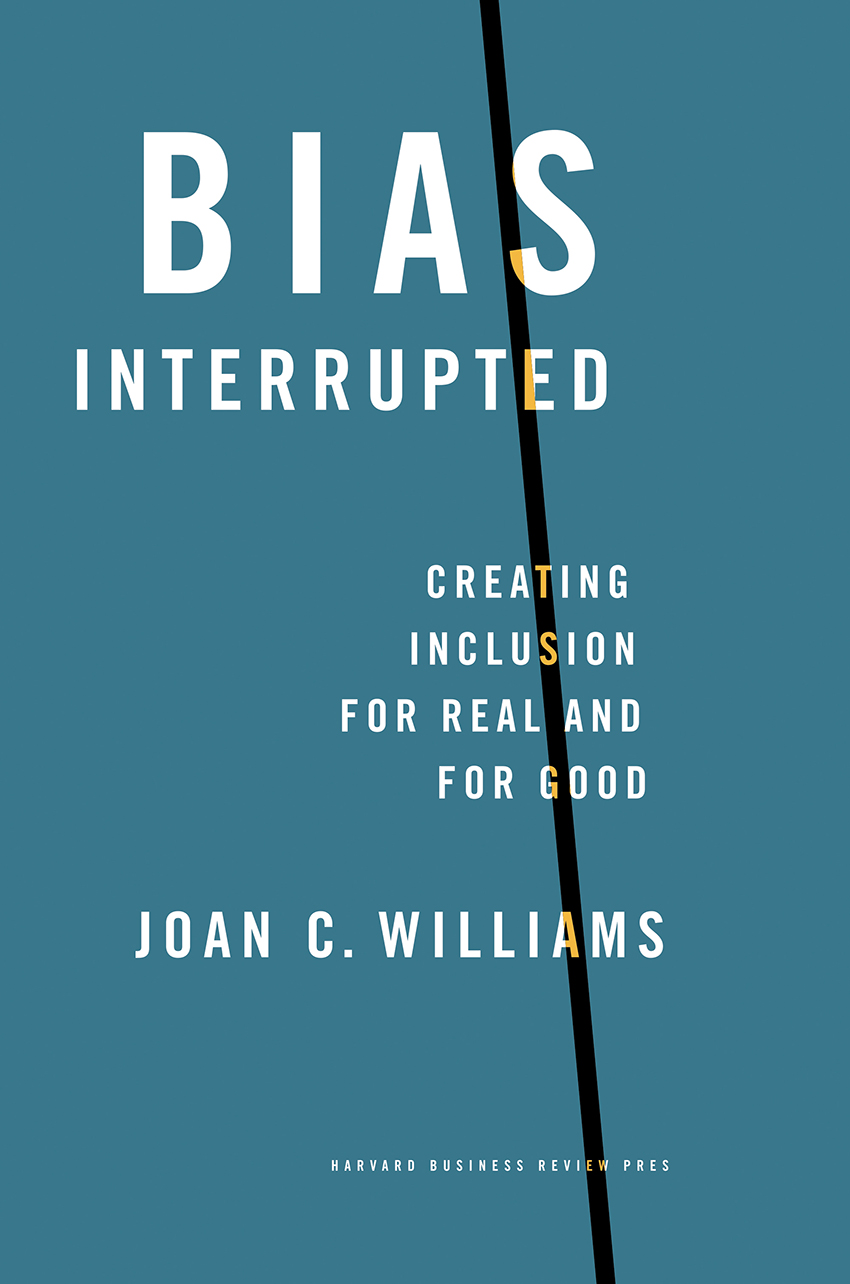By Ray Bert
Bias Interrupted: Creating Inclusion for Real and for Good, by Joan C. Williams. Boston: Harvard Business Review Press, 2021; 288 pages, $28.
Author and law professor Joan C. Williams kicks off her latest book, Bias Interrupted, with a telling — if initially off-topic — anecdote. She relates hearing a podcast where an economist described how an enormous insurance company could with one change save $1 billion, roughly 1% of its annual spending. An executive thanked him afterward and explained that what company leaders really wanted to know was how to save 15%. The economist patiently explained that there simply wouldn’t be a single step with that kind of savings — but a series of steps might eventually add to that much.
Williams’ epiphany was that she knew that same dynamic applied to an area of specialty for her: diversity, equity, and inclusion in the workplace. “We’ve all been looking for the grand gesture to solve the (DEI) problem in one fell swoop,” she writes. “It doesn’t exist. What does exist is a series of 1% changes that, with persistence, can help root out the bias that too often subverts our ideals of meritocracy.”
Crucially though, these small, 1% changes, which she refers to as “bias interrupters,” are rooted in the tools that good businesses use to solve most other problems: identifying what’s wrong and then measuring progress to fix that particular issue.
Bias Interrupted takes a look at how businesses can more consistently hire, retain, and promote people without dragging the anchor of their employees’ existing built-in biases behind them. The first two waves of bias training that companies have previously rolled out — sensitivity training and implicit association tests — were lacking because systemic problems can’t be solved with one-time solutions. They didn’t offer much beyond confirmation that bias existed.
To push the issue further and attempt to come up with solutions, Williams and her colleagues at the Center for WorkLife Law at the University of California’s law school conducted more than a dozen studies over the course of nearly a decade with thousands of people across different industries and organizations. They found that five different kinds of bias consistently show up.

These biases range from broad ones, such as some privileged groups getting the benefit of the doubt on their perceived innate “potential” versus those who are much more likely to be judged repeatedly and exclusively solely on their performance, to others, such as racial stereotypes and the strongest form of gender bias, the so-called maternal wall that assumes that mothers will be less committed to their careers. The book also notes that while it is helpful to acknowledge that on average white men report and experience lower levels of negative bias, it is not a monolithic group and certain subgroups — blue collar, older, or first-generation college graduates — experience their own forms of bias.
The book takes space to explain and prove that bias exists to make the case that evidence and data are still necessary because some people will resist the idea that cognitive biases exist — and you can’t solve a problem that people won’t acknowledge is there.
Bias Interrupted delivers on how to make changes happen — how to interrupt biases of all types and at many different places in the work environment. Many of the ideas offered involve establishing and following processes for personnel matters, rather than “going on gut.” (While they won’t always lead you astray, those gut feelings will be more prone to bias.) Another is to control for bias in interviews and performance evaluations by explicitly separating matters of personal style and approach from skill sets, tracking these, and noting imbalances for certain groups.
Topped off with several chapters directed separately at CEOs, chief diversity officers and human resources heads, and managers looking to meet DEI goals, Bias Interrupted tackles a complex and often contentious subject and packs a tremendous amount of research, evidence, strategy, and good old straight talk. Pulling no punches, the book manages to be persuasive while being aimed primarily at those who need help persuading others. And always focusing on what the facts show.



